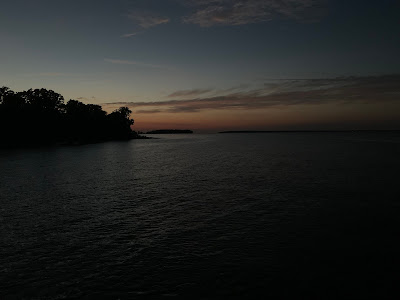 |
| Death comes for the Archbishop (with apologies to Willa Cather) |
Before our modern dependence on text, images were a staple of the diet that nourished the Faith. Now everybody has heard how those beautiful stained-glass windows catechized the illiterate, but the Church long understood that the value of visual images was not confined to those who could not read text. Not least because reading was not the only medium for the verbal expression of faith, as song and spoken prayer reinforced what was heard as homily or instruction, but also because images are powerful in their own right to reveal the truth.
As the link between word and meaning dissolves before our eyes under the stream of corrosive misuse, diluting overuse, and twisting abuse, it is a good time to rediscover the power of images to reveal and convey truth. As we head into November, the month when we reflect on the Four Last Things, let’s start with the first Last Thing: Death.
Last year I was in New York to see the exhibit at the Morgan Library of works by Hans Holbein the Younger, and among the striking things there were his woodcuts for Dances with Death. This was a recurring form, partly comic and partly serious, showing how death comes for everybody. In his day, the late fourteen and early fifteen hundreds, death was no more welcome but much more frequent, and there was no hiding from the reality.
 |
| The Empress was caught unawares. |
The woodcuts can make you chuckle unwillingly, as death, a grinning, grabbing skeleton, summons the oblivious empress or startled bishop, takes a chubby monk under his arm, or shows up at a joust to vanquish an armored knight. The trademark hourglass, signifying “Your time is up,” is always nearby. Not the funny papers as we have come to know them, these illustrations nonetheless amuse and entertain while revealing that one experience of human life is truly universal.
 |
| Nobody expects him to come for them. |
More recently, I recalled this art form when confronted with a similar expression at the Prado in Madrid. Without any preparation, I found myself staring at a large canvas depicting an army of skeletons laying waste the earth and all who are in it. Gruesome, clever, ironic, and truly horrible deaths are inflicted individually by rioting skeletons, some in shreds of costume, with weapons, tools, or just main force. An army of skeletons in unyielding phalanx moves across the composition; a crowd of wailing, resisting victims is herded into the gaping maw of an enormous coffin. Cities burn in the distance. There is no respite or relief to be found.
The work is “The Triumph of Death” and artist, Pieter Brueghel the Elder, was a contemporary of Holbein. Look it up; you can view it online at the Prado’s site here. It was the time of the so-called reformation, the rebellion of the protestant theologians and their princely allies against the Church. Sin and death, redemption and salvation were on everybody’s minds; it was what people talked about in the pub or at the fountain. This vivid, engrossing depiction of the inescapability of death would have brought mortality clearly to mind in everybody who saw the painting.
Now, you may find that repellant, but honestly, such lofty sentiment is a modern luxury. Our contemporaries are lulled into thinking that “we” have mastered death, or at least banished it to respectful and predictable boundaries. But the grinning skeleton lingers and lurks, mocking us, too, for our obliviousness. In some corner of our mind, we know how close he can be, and that none of us is ever out of his reach.
This is why it is good to look this ghoul straight in the eye (sockets) and recall that while he will indeed have his fun with us, we will have the last laugh. Death has not been eliminated from the earth or from human experience, but it has been changed. Christ has conquered death and transformed it from the end into a beginning of new life for all who by Baptism live in Him. For us who are members of Christ’s risen body, we already have eternal life coursing through our veins, and we know that life is stronger than death.
This is what I see behind our traditions at Halloween. Little kids play at frightening us, dressed up as the scariest things we know, even as death or demons. Then we laugh in one another’s faces, and give treats to reward the effort. At the same time we remind one another of death and its fearsomeness, we also remember that we are rescued from fear.
And do not fear those who kill the body but cannot kill the soul; rather fear him who can destroy both soul and body in hell. (Mt 10:28) To think about dying, to remember death, is to apply Christ’s prescription and turn away from the sin that can strangle the eternal life that has been poured into us, to eliminate the distance we have allowed to grow between ourselves and Christ our rescuer. To place confidence anywhere else, in technology or progress or our own plan of life, suffocates the Spirit whose breath is eternal life.
It is good to think about our own mortality, so we can remember our immortality, and the One who offers it to us. We can say this over and over, but sometimes it can be much more effective just to look at the pictures. Or the costumes: trick or treat! ...But deliver us from evil.
Monsignor Smith


